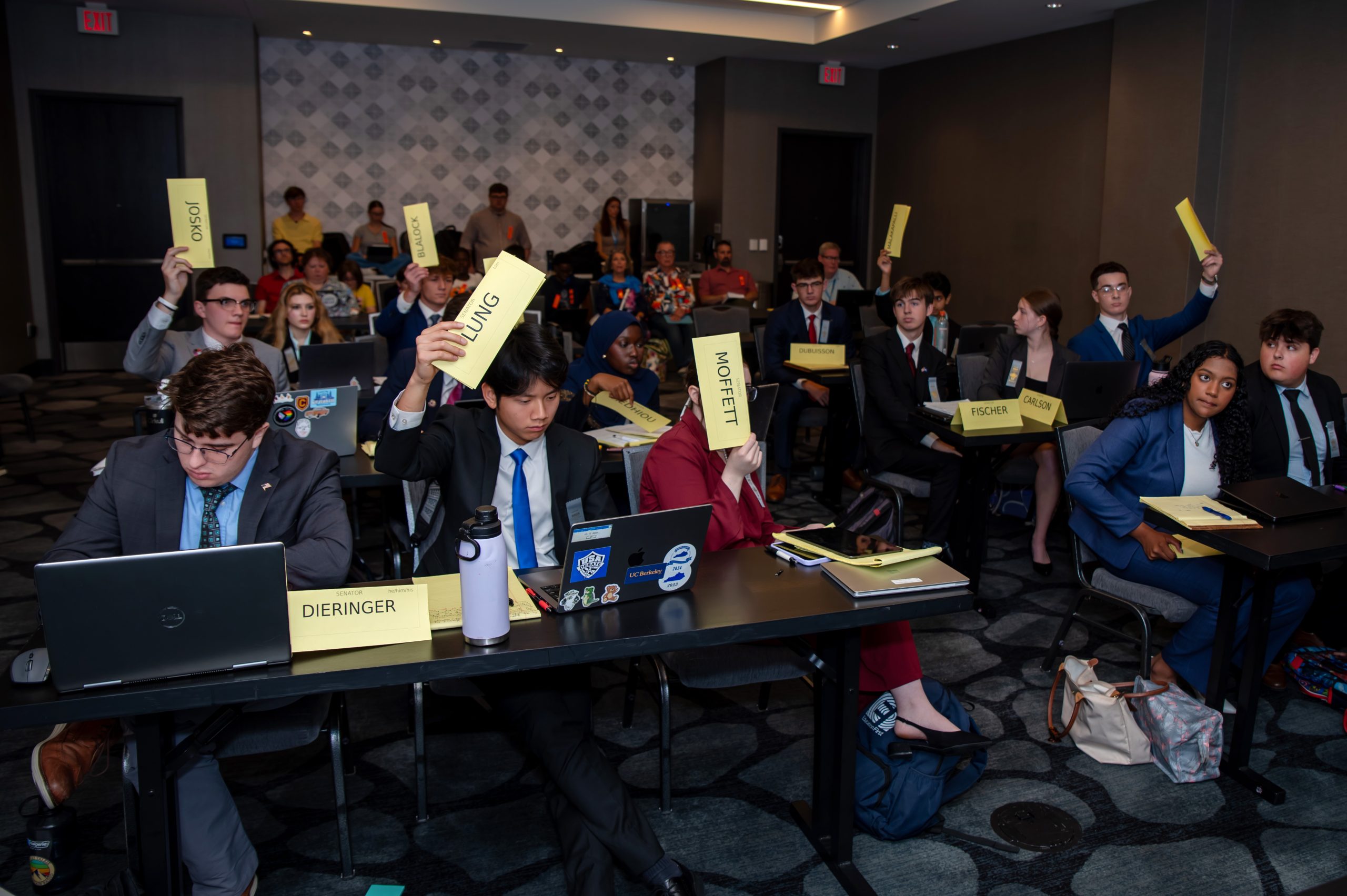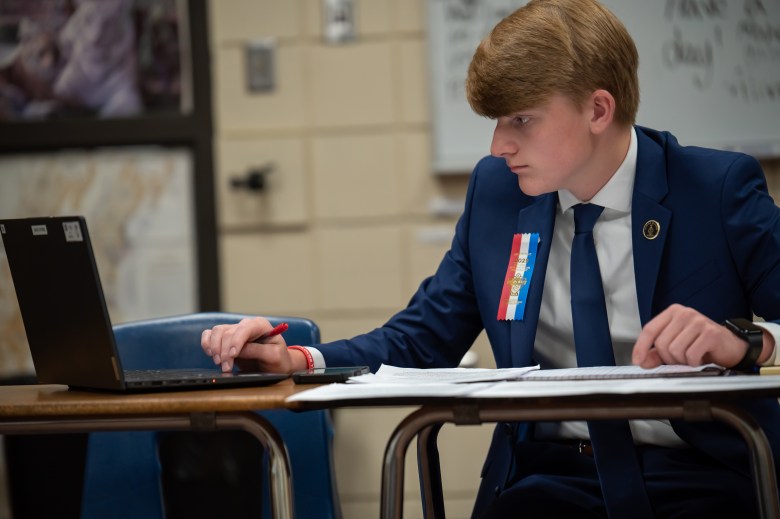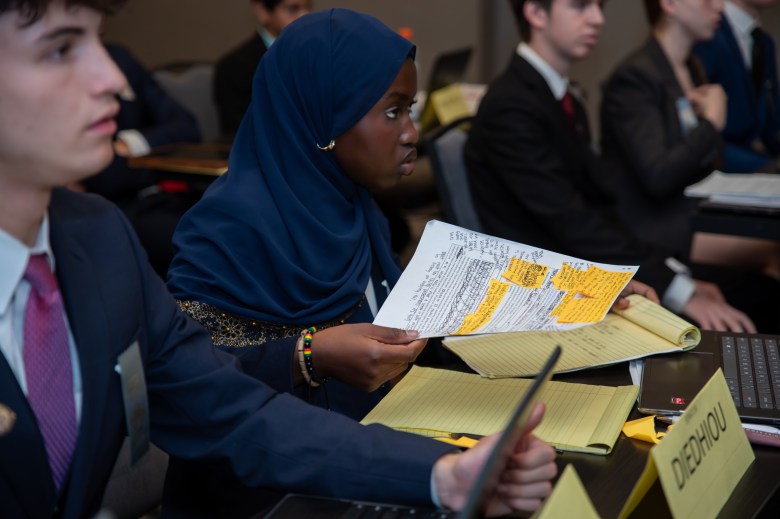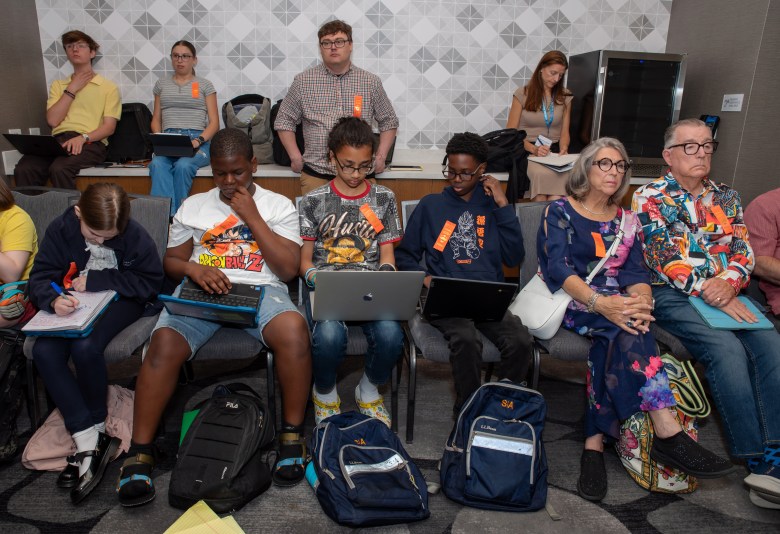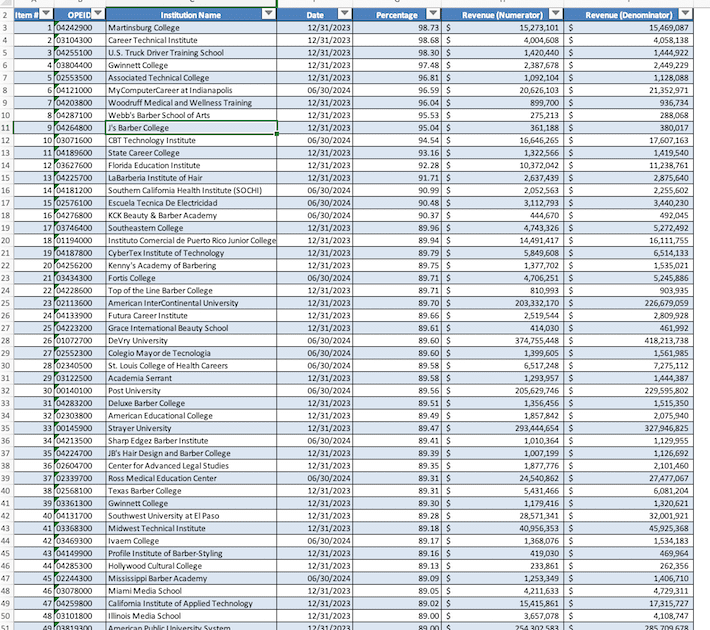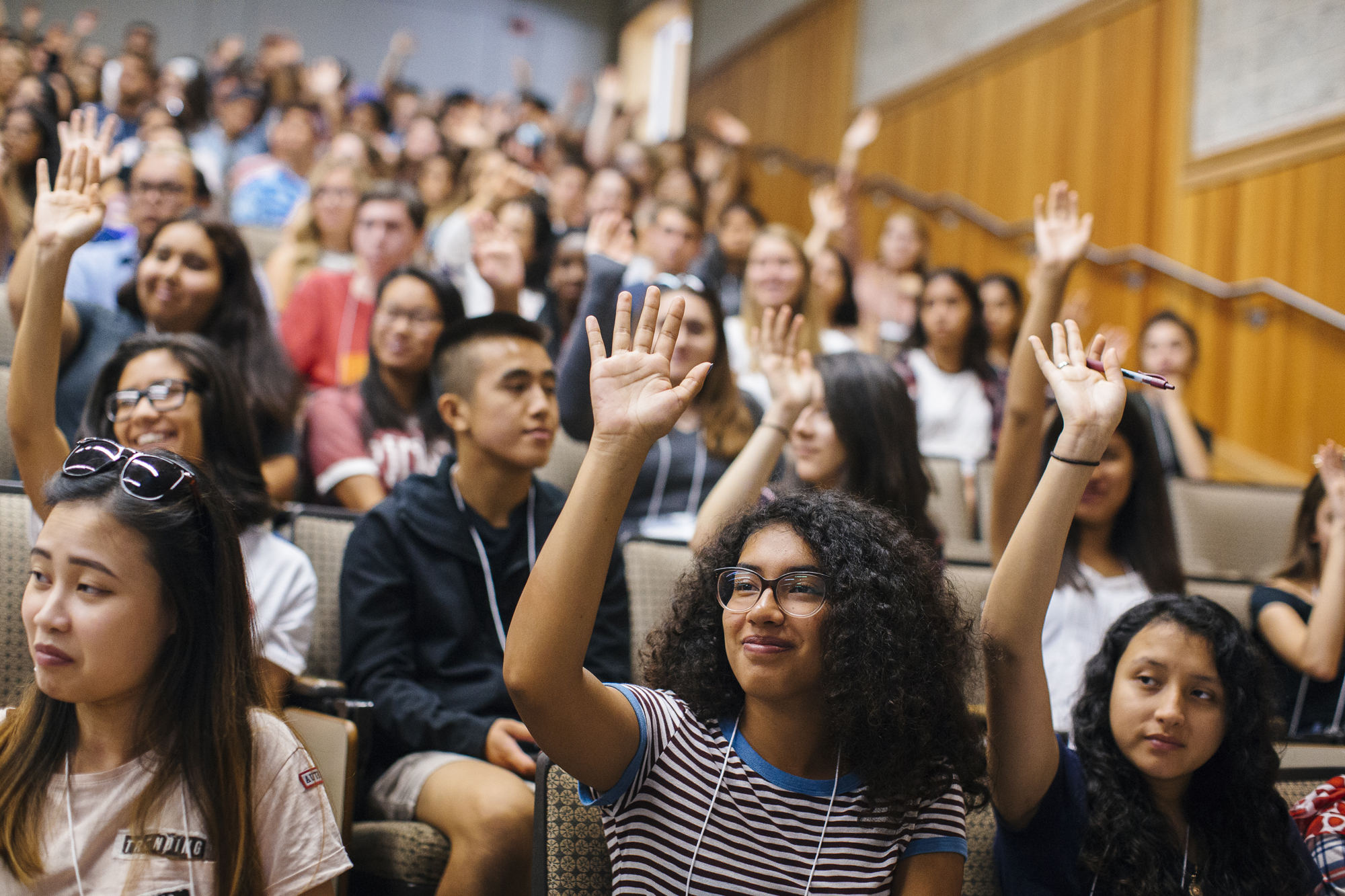Ahead of heading out for the summer to deliver training to new students’ union officers, as well as booking trains and hotels and placing an unfeasibly large order of (unfeasibly large) post-it notes, every year we have a run at reading and analysing all of the pledges made in their election manifestos.
Jim recalls a time when the key challenge emerging from the exercise was convincing the incoming crop that £1 a pint might need to be an occasional offer rather than a permanent price drop – a time when “student stress” was a precursor to mental health, and a time when “grants not fees” was a viable option rather than a lost era.
A time when promises to improve the awareness of, or to extend the range of goods on offer in the campus food bank would have been unimaginable.
Over the years, the pledges adorning the leaflets that litter the campus every spring have become less markedly less political and increasingly parochial. Oftentimes the key challenge has been to help new officers understand where their pledges meet policy – to help them locate what they want to achieve with the right committee or the appropriate PVC.
So there’s something quite bleak about a year in which the demands are so historically comparatively modest, yet also so simultaneously ambitious given the resource constraints facing the sector they’re about to be immersed in.
And as we dust down the exercises and update the slide decks, we’re left wondering whether the right message isn’t how to advocate for “more and better”, but instead should be picking which things shouldn’t join the growing group of aspects of the student experience that are becoming “less and worse”.
They are not, in and of themselves, a collection of PDFs that are fully representative of the student body’s needs and aspirations. Many tell us more about a particular university’s culture and structure, or that students’ unions’s local funding settlement, than they do the realities of the contemporary student condition.
But taken together, they tell us quite a bit about how students see their education and the aspects of it they’d like to see change. We’ve read, coded and analysed over 1,000 of them this year – from both winners and many of the losers – and our main conclusion is that the parochialism on offer belies something more than a lack of ambition or understanding of politics.
They suggest a generation struggling to believe in possibility – one for whom the world looks like it will never get better, and where making little tweaks to help students cope is the wisest way to avoid being yet another politician whose promises will be broken. The question we’re struggling with is whether to amp up their ambitions, or temper their expectations with a dose of reality.
Back to basics
The first thing you notice when taking a step back from this year’s crop is that universities seem to be systematically failing to deliver fundamental aspects of the educational experience. The manifestos reveal students demanding things that ought to be standard – lecture materials uploaded in advance, breaks in long teaching sessions, consistent feedback. It’s not even about demanding extras or enhancements – it’s often about institutions not delivering the basics:
Right now, some departments give detailed comments, while others leave students guessing…feedback should help students improve, not just justify a grade.
Helen Slater, Education Officer, SU University of Bath
Multi hour lectures should have a short break, make this enforced. Rebecca Schofield, Loughborough Students’ Union
When, like us, you know what’s in the Quality Code or the B Conditions of the regulatory framework like the back of your hand, the sheer volume of pledges about improvements to simple things is dispiriting. Students shouldn’t need to campaign for things like accessible learning materials, or for the VLE to work:
…resolving issues with timetabling. This will mean you receive your timetables earlier than 1-2 teaching weeks.
Amrit Dhillon, University of Manchester SU
End Deadline Clumping: Two deadlines shouldn’t fall on the same day, students perform best when they can focus on one piece of work at a time.
Aliasgar Gandhi, Birmingham Guild, Postgraduate Officer
What also emerges is a picture of institutions that have failed to adapt to students managing multiple responsibilities – work, commuting, caring duties – whilst trying to engage with their education. The assumption that getting into university means being ready for it, and that they’ll be able to benefit from what’s there, is coming apart:
Have timetables that work for you! No more waiting around for lectures!
Lily Watson, President, University of Chester
Improve assessment timetabling by involving departments, preventing deadline clashes, and ensuring deadlines are released earlier.
Aya Haidar, Academic Officer, York University SU
It all suggests a generation that has lost faith in institutional competence and is demanding explicit guarantees that basic teaching and learning processes function in a way that allows them to experience them. We’re left wondering whether to explain what it is that students are entitled to – even if it seems that on the resource available, many universities are struggling to deliver it.
Time won’t give me time
It’s long been clear that student disengagement tends to reflect time scarcity rather than apathy. Manifestos reveal students stretched impossibly thin between work, commuting, and study, making traditional university schedules completely unworkable:
Flexible Timetables & Online Learning: University should fit around your life, not the other way around. This isn’t just about convenience—it’s about reducing stress and creating a study environment that fits your needs, whether balancing work, personal life or study preferences.
Forum Yadav, Education Officer, Manchester Metropolitan SU
… implement a hybrid learning system that encourages people to come into the classroom in person, without disadvantaging those who cannot make it to lectures in person. This system would allow disabled students to keep up without putting their health at risk, and allow students to actually stay home when they’re ill… or have other commitments.
Lyds Knowles, Diversity, Access and Participation Officer, University of Sussex
Every set of manifestos contains pledges about scheduling that acknowledge students no longer have full-time availability for academic life. Universities persist with timetables designed for a student body that could prioritise education over economic survival:
Concurrent lectures, especially around lunch time cause students to not be able to have lunch. We will work with Vice Deans and programme officers to sort out the timetables to make sure there is an hour free at noon for students to be able to eat.
Baiyu Liu, President, King’s College London SU
The grouping of deadlines, it is unfair to expect students who also have to work part time jobs to submit their deadlines all in the same week. Often leading to burnout, stress and further complications. I would like to see the deadlines spread throughout a student’s academic journey allowing them the time and freedom to explore them in full.
Joshua Frost, President Faculty of Arts, Humanities and Business
The depth of these time management proposals reveals institutions fundamentally out of step with student reality. When students need explicit campaigns for reduced commute times, condensed timetabling, and online options, it suggests universities are designing education around institutional convenience rather than student availability:
Timetabling that will be student-friendly
Francis Ani. President for Student Communities, Hull SU
Make NECs more easily accessible for students, and more confidential; you shouldn’t have to disclose personal circumstances to attain a needed extension!
Ryan Turner, VP Postgraduate Candidate, Nottingham Trent Students’ Union
It all represents a fundamental challenge to the traditional university model, which assumed students could treat education as their primary occupation rather than one competing demand amongst many. We’re torn between encouraging SU officers to challenge that – or whether they should find ways to help students meet the demands.
The earn-and-learn economy
The traditional full-time student model seems to have completely collapsed as financial necessity forces students into near full-time work alongside study. The manifestos treat work not as supplementary income but as a survival strategy that universities must actively support:
Students are left with no option other than work excessive hours in their part time jobs to be able to afford basic necessities, having a negative impact on both their academic as well as their university experience.
Aisha Lord, Vice President Falmouth, Falmouth and Exeter SU
Almost all students commute to university… This can be very costly and stressful, and force students to work extra hours, which takes away from their study, and their overall energy.
Komal Ashfaq, President, Manchester Metropolitan University
Rather than treating work and education as competing demands, the manifestos demand integration – paid internships, work experience built into courses, and academic arrangements that accommodate employment. It reflects students who can’t afford to see work and study as separate:
Lobby for part-time work experience that matches course content and enhances learning.
Ismail Patel, Candidate for Education Officer, University of Bradford Students’ Union.
Advocate for more internship and part-time work opportunities for postgraduate students.
Navin Raj Ramachandran Selvaraj, Candidate for Postgraduate Students’ Officer, Oxford Brookes University.
Their proposals go beyond simple job-finding to demand that universities take responsibility for helping students find good work that develops relevant skills. It suggests a complete rejection of the idea that student employment is peripheral to education:
Push for More Part-Time Job Opportunities on Campus Financial stability is crucial for students, and I will advocate for more part-time roles within the university.
Muhammad Barik Ullah, Vice President of Undergraduate Education, Westminster SU
I will also campaign nationally for increased apprenticeship schemes that provide real-world experience beyond the lecture hall.
Matthew Lamb, candidate for Education Officer, Lancaster University SU
It also reflects a generation that sees no viable alternative to integrating work and education, and expects institutions to adapt accordingly rather than maintaining the fiction of full-time student focus. We can’t work out whether they should fight to reclaim the full-time student experience, or continue to try to fit too much into a tight timetable.
The financialisation of… everything
On that, cost-of-living concerns have invaded every aspect of university life because the student finance system has fundamentally failed to cover basic living expenses. The manifestos demand subsidised everything – meals, transport, laundry, stationery – revealing students unable to afford necessities:
Increase the Selection and Diversify £1.50 Value Meals to ensure access to affordable, nutritious options. …Offer Free Meal Planning and Cooking Classes to help reduce grocery expenses and prevent malnutrition.
Izzy Downer, Community Officer, SU University of Bath
I will fight to make the university more affordable with cheaper housing and bus travel (whilst increasing frequency!)
Lewis Wilson, Education Officer, University of Sussex
The breadth of financial support demanded goes far beyond traditional student finance, extending to food banks, emergency funding, and discounted services. Maintenance loans are no longer functioning as intended:
Subsidise essential supplies like period products and course materials.
Ana Da Silva, VP Welfare & Community, Royal Holloway Students’ Union
Lower Living Costs – Reduce food, rent, and transport expenses for students… Food on campus should be affordable for everyone. At least one cheap, healthy option should be available on every menu.
Emma Brown, Union President, University of Southampton
Increasing provisions of free menstrual products across campus.
Leah Buttery, Wellbeing Officer, Lancaster University
Students are essentially demanding that universities compensate for a broken national funding system by subsidising daily life. The manifestos treat a financial crisis as so normalised that every policy area must include cost-reduction measures.
But with little prospect of significant relief coming from government, we’re torn between whether they should campaign into the ether for better student financial support, or find further fixes internally to provide some relief.
Radical transparency as a default expectation
More than ever this year, candidates are demanding real-time access to information about every aspect of institutional decision-making, reflecting a generation raised on social media expecting constant updates and complete visibility:
I will push for minutes of all committee meetings to be published on the student portal within a week.
Sophie Elsey, Candidate, University of Wolverhampton Students’ Union
More transparency from the university management in decision making, including budget allocations.
Candidate, Queen’s Students’ Union
Manifestos go far beyond traditional accountability to demand that previously private institutional processes become completely transparent. Students want detailed financial breakdowns, accessible decision-making explanations, and immediate access to information that universities have historically kept internal:
Provide an open-access dashboard showing real-time spending on student services and capital projects.
William Garvey, Officer Candidate, University of the Arts London Students’ Union
Push for module leaders to share assessment marking rubrics with students in advance.
Hasan Chowdhury, Candidate, University of Chester Students’ Union
Traditional consultation processes and annual reports are treated as inadequate relics. Students expect real-time feedback systems, open access to committee discussions, and quarterly updates that explain exactly how decisions are made and money is spent:
I will advocate for livestreamed town halls where university leaders take student questions unfiltered.
Jasmine A., Candidate, Edge Hill Students’ Union
Push to publish all course changes on a centralised, searchable hub before implementation.
Priya Chandra, Academic Officer candidate, University of Bedfordshire Students’ Union
That isn’t just about accountability but about fundamental assumptions around information access. Students treat transparency as a default setting rather than something institutions graciously provide when pressed:
Introduce opt-in alerts so students are notified whenever the university makes a policy change that affects them.
Mohamed Khaleel, Candidate for VP Academic Affairs, Cardiff Metropolitan University SU
The depth of the transparency demands suggest a rejection of traditional institutional opacity and a belief that students have the right to understand exactly how things work rather than trusting authority figures to act appropriately. We could encourage them to demand clarity – or we could prepare them for a year during which confidential discussions are more likely to be the norm.
Bureaucracy as liberation technology
Rather than seeing formal processes as obstacles, students genuinely believe that better systems and structured procedures can solve problems that previous generations addressed through personal relationships or protest:
I’ll lobby for a standardised extension policy across departments to remove ambiguity and favouritism.
Aisha Khan, Education Candidate, Aston Students’ Union
The manifestos systematically replace informal advocacy with process-driven representation that offers genuine agency rather than tokenistic consultation. This reflects deep scepticism about personal relationships as reliable routes to change:
Create template emails and appeal guides for students contesting grades or procedures.
Liana Dsouza, Candidate, Solent Students’ Union
Mandate response times for all university emails affecting students’ academic progress.
Zehra Al-Khatib, Candidate, University of the Highlands and Islands SA
Students want predictable, systematic responses that don’t depend on who happens to be in charge or what mood they’re in. The proposals assume that good design can guarantee fair treatment regardless of individual personalities or relationships:
Create an online portal where students can see the status of any ongoing issue or query.
Lydia Spencer, VP Education Candidate, Bucks Students’ Union
Replace paper-based mitigating circumstances with an automated and transparent digital system.
Jayden Moore, Candidate, University of South Wales Students’ Union
It reads like an inversion of traditional anti-bureaucratic politics, suggesting a generation that trusts systems more than individuals and sees formal processes as tools of liberation rather than oppression. But we are left wondering whether they should advocate for more human approaches – or whether they should place faith in systems that at least appear to them more consistent and fair.
Change is inevitable (except from the vending machines)
Not nearly as much as we’d like, we are starting to see the wide-ranging organisational change processes and restructures come through in manifestos. But while a decade or so ago we might have seen pledges to “fight the cuts”, more often than not we see candidates keen that students are at least kept in the loop:
One of the biggest frustrations students have is feeling like decisions are made about them, not with them. Whether it’s changes to course structures, university policies, finance or support services, students often feel out of the loop or unsure about where to raise concerns. I want to push for better transparency between students and the university, ensuring that major decisions are clearly communicated and that student voices are involved from the start.
Humphrey Kasale, President, Manchester Metropolitan University
“The University and its partner colleges have embarked on a process to explore new operating models including merging into a single institution to help save money and make the institution more sustainable…I will push for any savings to be made through greater efficiencies from the university and colleges working closer together on back office functions and not at the cost of the frontline student experience.
Xander McDade, Students’ Association President, UHI (University of the Highlands and Islands)
In some cases manifesto sets seem oblivious to announced redundancy rounds or major change projects that are bound to dominate their year. In others, students see problems coming that others may have missed:
I hope to ensure that grading and marking stay consistent with the merging of departments soon so continuing students don’t get marked down for writing essays in a specific way they’re used to when taking modules outside of their departmental subject that have different essay structures.
Noor Abbass, candidate for Education Officer, Goldsmiths
Ensure smooth transition during departmental mergers
Jeevana Sandhya, Education Officer candidate, University of Leicester
Again, we are puzzled. Should we explain just how tough the year looks set to be across many of the universities we’ll be visiting, or keep them focussed on the aspects of the experience they’d like to see improved?
Power as something you practise
One thing that is a constant from previous years, and very much reflects the Gen-Z preference for horizontal support, is plenty of pledges on peer support – on everything from wellbeing to study skills:
I pledge to create an anonymized essay-bank showcasing past student work to illustrate degree classifications, helping students understand grading standards and academic expectations.
Gina Tindale, Academic Officer, Newcastle University
Expand Buddy Schemes and Pastoral Support for undergraduates and postgraduates.
Joshie Christian, Vice President Education, University of Southampton
I will launch a mentorship programme for new volunteers to gain a deeper, more comprehensive understanding of student media and its dynamics.
Libby Griffiths, Student Media Officer, Newcastle University
Even on this one, we can’t work out what to do. Explain how hard it’s getting to find and support student volunteers to deliver the student experience for each other, or encourage them to explore the sorts of schemes we see on the continent that offer academic credit,a payment (or both) – building students’ skills in the process?
Climb every mountain higher
In most universities every summer, there’s a careful little dance being played between new SU officers and the senior managers they most often meet with.
On the SU side, pledges get converted into exploratory conversations to test the appetite for change in the year ahead. On the university side, managers will be sussing out the leaders that students have picked – are these ones who we can work with, or ones that need to be disabused of their assumptions and ambitions?
Having discussed the choices at length, for what it’s worth, we’ll be doing what we always do – not making assumptions or carefully manipulating them towards particular actions, but laying out what’s going on and why so they can make those choices for themselves. After all, they are almost always perfectly able to.
But as well as our usual advice to listen and be curious about the underpinning experiences that lead to their policy ideas, we do have one additional bit of advice this year.
The “sunshine indoors” decade of promises to provide pretty much everything to do with the student experience reflects what universities have been doing too. It might have made sense when there was money around to invest – but it’s now not only proving impossible to deliver, it obscures the role that other areas of government should be playing in the student experience.
Whether it’s the business department’s dismal failure to think about students at work, the absence of the recognition between health and successful study for health ministers, or (in England and Scotland) housing legislation seeming to be silent on struggles students face, it does feel like we’re close to the end of what universities can do to improve things – with untapped potential for the rest of the public realm to step up to support students.
Student leaders and university managers may well come from different worlds, and may well need to respectively deepen their understanding of those worlds – but whether working in close partnership or public opposition, they ought to be able to agree to explore together how and why we got here – and the sorts of external lobbying and campaigning that can get us somewhere else.
It’s almost certainly external to the university where the real possibilities can be found – and feels like students advocating for students while universities advocate for universities is a separation that should come to at least a temporary end.


